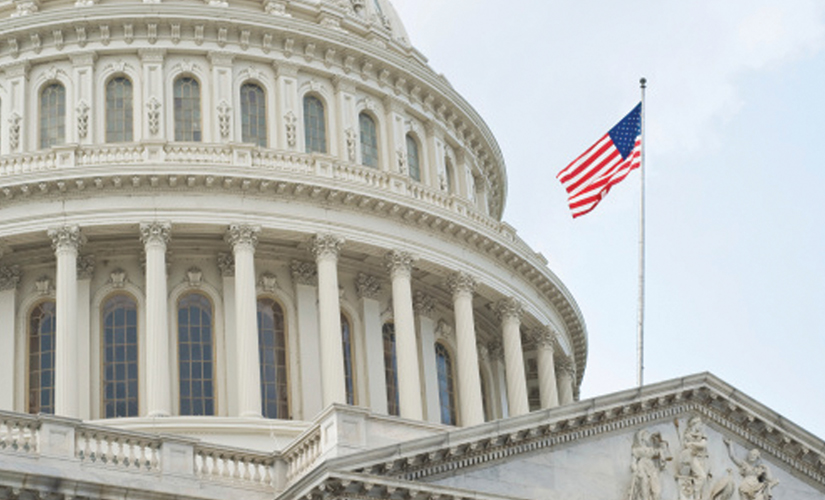Quad Needs US Tech to Secure IndoPacific

iStock illustration
President Joe Biden in May embarked on one of the most high-profile and consequential diplomatic trips of his administration.Set against the backdrop of escalating global tensions — most notably Russia’s invasion of Ukraine — the president journeyed to Asia with the strategic goal of bolstering historic relationships within the Indo-Pacific region. He met with several heads of state and provided greater context, and reassurance, on America’s vision for a free and stable Pacific.
Despite an ambitious and wide-ranging agenda, arguably the most significant development that occurred during this trip was the reaffirmation of Quadrilateral Security Dialogue by its founding members. This geopolitically relevant quartet of partners, consisting of the United States, Australia, India and Japan, was originally constituted to serve as, what former Japanese Prime Minister Shinzo Abe called, “the Asian Arc of Democracy.” It would be a strategic dialogue, bolstered by increased diplomatic and military cooperation, with the purpose of ensuring a free and open Indo-Pacific.
However, this partnership, which was originally founded during the later years of the George W. Bush administration, did not always enjoy the same level of cooperation that it currently does. In fact, it has encountered numerous obstacles in its short history. Despite a promising start, competing priorities soon scuttled the Quad, as member nations, most notably Australia, sought to foster closer relations with the Chinese government.
In the interceding years, several key geopolitical developments emerged that necessitated a reconsideration of the suspended dialogue. For instance, under the leadership of Xi Jinping, China began instituting a far more aggressive Indo-Pacific foreign policy than it had previously embraced. China began claiming wide swaths of territory in the South China Sea with the infamous “nine-dash line” and militarized islands throughout the region.
These concerning actions, coinciding with the U.S. “pivot” towards Asia, laid the groundwork for the revival of the Quad.
Unsurprisingly, the re-emergence of this arrangement has antagonized regional adversaries, most notably Beijing. Despite initially dismissing the strategic partnership as fleeting, or akin to “sea foam in the Pacific,” Chinese attitudes have recently taken a more hostile tone. The Chinese government has accused the Quad of harboring NATO-like aspirations, with its foreign minister stating that it is merely “stoking geopolitical rivalries.”
Despite the protests from China, the momentum behind the Quad is accelerating. Cooperation has increased, and there are talks surrounding the expansion of this arrangement to include other regional powers. What does such cooperation mean for the United States and its defense industrial base?
Following the recent Quad meeting, the White House released a statement addressing key areas of future cooperation. “Critical and Emerging Technologies” were specifically highlighted and the following topics were addressed.
It was announced that the “Quad will cooperate on technical exchanges and testbed activity to advance interoperability and telecommunications cybersecurity.” Furthermore, the Quad members launched a “consortium of investors that seeks to advance access to capital for critical and emerging technologies within and across the Quad.”
Finally, the member nations launched a “Quad Cybersecurity Partnership” that will “aim to prevent cyber incidents, prepare national and international capabilities for potential cyber incidents, and/or respond quickly and effectively to a cyber incident, when or should one occur.”
This list of ambitious objectives, while not exhaustive, has clear implications for U.S. industry. Not only will U.S. industrial forces be called upon to cooperate with key allies, but they are doing so with a purpose.
Based on the White House statement and other administration comments, the defense industrial base will be instrumental in fostering enhanced cooperation between the U.S. and its Indo-Pacific allies. Whether it be information sharing or the development of essential technologies, industry will be a key instrument in U.S. efforts to deter threats in a vital region.
The Quad partnership is reflective of a world whose threats and challenges are continually evolving. Since the conclusion of the Cold War more than 30 years ago, the United States has largely operated in a unipolar environment. Without the lingering threat of the Soviet Union, the United States operated as the sole superpower on the world stage. Yet as history has shown time and again, global political dynamics rarely remain stagnant for long.
China has now risen within the global community, harboring ambitions to challenge the military and economic dominance of the United States. To achieve this, China has been able to utilize its government-backed investments in critical sectors.
Despite these advancements, there are key differences that remain between the United States and its chief adversary in the Pacific. America does not operate a command economy and has never done so. The U.S. economy, based on free-market principles, will never out-central plan the Chinese. Therefore, the United States must continue to rely on its allies, along with its innovative defense industrial base.
By emphasizing these historic strengths, the United States will be able to foster strong diplomatic relations in the Indo-Pacific. The Quadrilateral Security Dialogue, of which U.S. industry plays an essential part, will enable the United States to maintain a strategic advantage over its number one pacing threat, China.
Jeff Goldberg, NDIA Regulatory Policy
Topics: Global Defense Market


Comments (0)